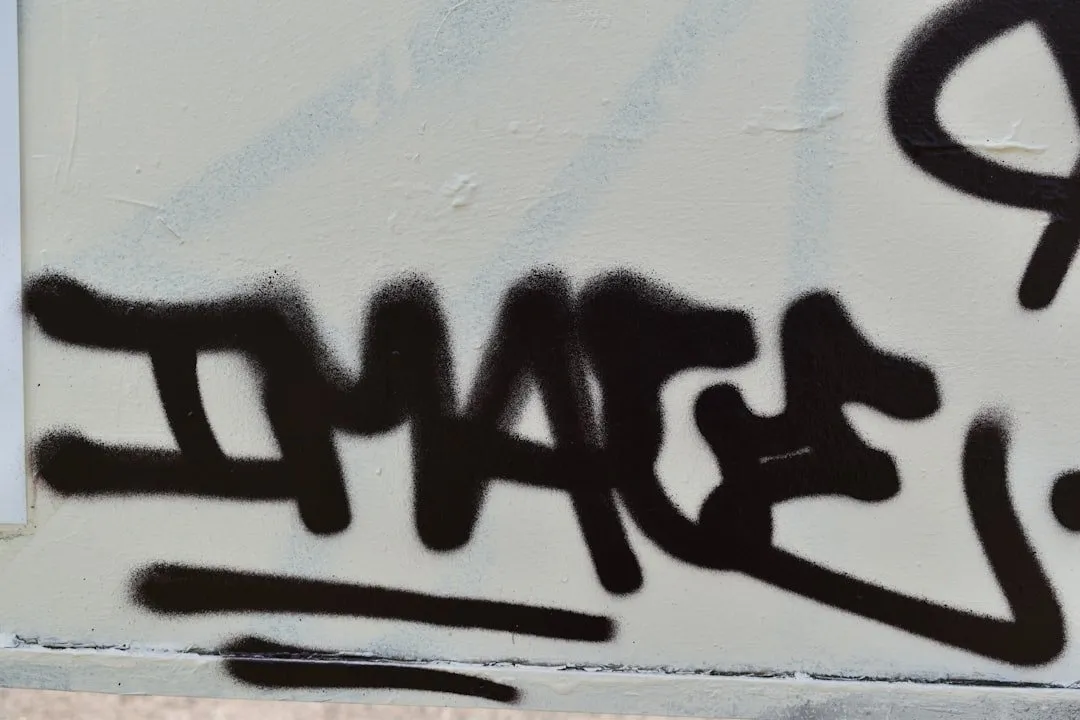Category: why is kratom banned in sarasota
Why is Kratom Banned in Sarasota? A Comprehensive Analysis
Introduction
In recent years, the city of Sarasota, Florida, has made headlines due to its controversial decision to ban kratom, a natural herbal substance with potential medicinal and recreational uses. This move has sparked debates among residents, health advocates, and policymakers, prompting questions about the reasons behind such a drastic measure. In this article, we embark on an in-depth exploration of the ‘why’ behind Sarasota’s kratom ban, delving into its complex web of social, legal, and health considerations. By examining various facets of this issue, we aim to provide a comprehensive understanding of the challenges posed by kratom and the city’s response.
Understanding Why Kratom is Banned in Sarasota
Definition and Background
Kratom, scientifically known as Mitragyna speciosa, is a tropical tree native to Southeast Asia, primarily cultivated in countries like Thailand, Malaysia, and Indonesia. The plant’s leaves have been used for centuries by indigenous peoples for their psychoactive properties, offering a range of effects from relaxation and pain relief to energy and focus enhancement. In recent times, kratom has gained global attention due to its growing popularity as a natural alternative for managing opioid withdrawal symptoms and chronic pain.
Core Components and Effects
Kratom contains various alkaloids, with mitragynine and 7-hydroxymitragynine being the most significant. These compounds interact with the body’s opioid receptors, leading to effects similar to those of prescription opioids but with a lower potential for addiction. The effects of kratom can vary widely depending on the strain, preparation method, and individual tolerance, ranging from a calm and relaxing high to energizing and euphoric sensations.
Historical Context of Bans
The global debate surrounding kratom has intensified in recent years due to increasing concerns over its misuse and potential adverse health effects. While some countries have embraced kratom as a legal alternative for pain management and addiction treatment, others have taken a stricter approach, leading to bans or severe restrictions. Sarasota’s ban can be understood within this broader context of growing international scrutiny and local efforts to address public health concerns.
Global Impact and Trends
International Influence
Kratom’s global trade has expanded significantly over the past decade, driven by a growing demand for natural, alternative treatments in Western markets. This trend has sparked both interest and concern among regulatory bodies worldwide. The United Nations’ International Narcotics Control Board (INCB) has reported increasing seizures of kratom, indicating its growing illicit trade, which raises questions about quality control and potential diversion to the black market.
Regional Trends
- Asia: In Southeast Asia, kratom remains a deeply ingrained part of traditional medicine practices. Some countries have taken steps to regulate its sale and distribution, while others have implemented complete bans. Thailand, for instance, has tightened regulations on kratom products, while Malaysia has made efforts to control its export.
- North America: The United States has seen a surge in the online sales of kratom, with Florida being no exception. Sarasota’s ban reflects a growing trend among US municipalities to address the concerns related to kratom’s accessibility and potential misuse.
- Europe: The European Union has varying regulations regarding kratom, with some member states allowing its sale for adult recreational use while others restrict it primarily to medical applications.
Economic Considerations
Market Dynamics
The global kratom market is estimated to be worth several billion dollars, with a significant portion of this revenue generated by online sales and specialized retail outlets. Sarasota’s ban could impact local businesses that once catered to the kratom-using community, but it also reflects a broader trend of regulatory actions that may influence the market’s overall trajectory.
Investment Patterns
Kratom’s growing popularity has attracted investors seeking to capitalize on this emerging market. However, the unpredictability and variability in regional regulations create challenges for long-term investment strategies. Sarasota’s ban may deter some investors but could also open opportunities for businesses focusing on alternative, regulated products.
Technological Advancements
Extraction and Analysis Methods
Advances in extraction techniques have improved the quality and purity of kratom products, enabling more precise dosing and controlled effects. Modern analytical methods have also enhanced product safety by identifying potential contaminants and adulterants. These advancements could help mitigate some of the health concerns associated with kratom use.
Digital Marketplaces and Education
The rise of e-commerce platforms has made kratom more accessible globally, but it has also facilitated the spread of misinformation and unverified product claims. Technological solutions, such as blockchain-based traceability systems, can enhance transparency and consumer protection, addressing a significant concern in the industry. Additionally, digital education platforms can provide accurate information about kratom use, reducing potential harms.
Policy and Regulation
Legislative Frameworks
The regulation of kratom varies widely across jurisdictions, reflecting differing cultural, social, and political perspectives. Some countries have legalized it for medical or recreational use, while others have implemented strict controls or outright bans. The United States, for instance, has left the regulation primarily to state level, resulting in varying levels of access across different states.
Impact on Public Health
The lack of uniform regulations presents challenges in ensuring product safety and quality, particularly regarding kratom’s potential for misuse and addiction. Some advocates argue that proper education and regulated distribution channels can reduce these risks, while critics maintain that the inherent variability in kratom’s effects makes it unsuitable for widespread use.
Challenges and Criticisms
Health Concerns
One of the primary reasons cited for Sarasota’s ban is the potential health risks associated with kratom use. Local officials have expressed worries about the substance’s ability to cause addiction, liver damage, and other adverse effects, especially when misused or combined with other substances. However, critics argue that these concerns are exaggerated and that proper education and regulation can mitigate such risks.
Access to Alternative Treatments
Supporters of kratom access argue that the ban limits individuals’ choices for managing chronic pain and opioid withdrawal. They advocate for evidence-based approaches to address these issues, including standardized doses and counseling, rather than complete prohibition.
Enforcement Challenges
Enforcing a kratom ban presents unique challenges due to its prevalence in online markets and diverse preparation methods. Sarasota’s law enforcement agencies must navigate the complex web of legal gray areas and adapt their strategies to effectively target illegal sales and distribution networks.
Case Studies
Successful Regulation in Thailand
Thailand, known for its rich kratom culture, has implemented a comprehensive regulatory framework that controls the cultivation, processing, and sale of kratom products. This system includes strict licensing requirements, quality control measures, and educational campaigns. As a result, Thailand has experienced a reduction in harmful kratom-related incidents while maintaining access to traditional medicine practices.
Opioid Withdrawal Programs in North America
Several US states have incorporated kratom into their opioid withdrawal treatment programs with positive outcomes. For instance, Vermont’s pilot program allowing the use of regulated kratom for opioid addiction recovery led to significant reductions in overdose deaths and improved patient retention rates. These case studies demonstrate that carefully managed kratom access can be a valuable tool in public health initiatives.
Future Prospects
Emerging Research and Treatment Opportunities
The future of kratom regulation may lie in continued scientific research, which could uncover new therapeutic applications and reinforce existing ones. For example, ongoing studies into kratom’s potential for treating anxiety disorders, PTSD, and opioid use disorders could provide compelling arguments for its controlled access.
International Collaboration and Harmonization
As the global kratom market continues to evolve, international cooperation becomes increasingly crucial. Harmonizing regulations across borders could help manage supply chains, ensure product quality, and address concerns related to diversion and illicit trade. Regional collaborations could lead to more effective strategies for regulating kratom while respecting cultural differences.
Digital Health Solutions
The integration of digital health platforms can play a pivotal role in educating users, monitoring consumption patterns, and providing personalized guidance on kratom use. These technologies can help reduce misuse and ensure that individuals make informed decisions regarding their health.
Conclusion
The ‘why’ behind Sarasota’s kratom ban is multifaceted, reflecting global trends, local concerns, and differing perspectives on substance regulation. While the debate surrounding kratom continues, it is essential to approach this complex issue with a nuanced understanding. By examining case studies, exploring technological advancements, and fostering international dialogue, policymakers can develop effective strategies that balance public health interests with individual freedoms. Ultimately, a balanced approach, informed by evidence and guided by community needs, will be crucial in shaping the future of kratom regulation.
FAQ Section
Q: Is kratom illegal worldwide?
A: No, kratom is not illegal globally. However, its status varies significantly across countries. While some nations have embraced it for medical and recreational use, others have implemented strict controls or complete bans due to varying cultural, legal, and health considerations.
Q: Does the ban in Sarasota mean kratom is completely off the market?
A: No, the ban specifically targets the sale and distribution of kratom within the city limits of Sarasota. It does not prohibit individuals from possessing kratom products obtained legally from other jurisdictions or participating in ongoing research or medical treatments involving kratom under professional supervision.
Q: Are there safe ways to use kratom?
A: Like any substance, kratom’s safety depends on responsible and informed use. Standardized doses, proper preparation methods, and counseling can help reduce potential risks. However, it is crucial to consult with healthcare professionals before incorporating kratom into any health or wellness regimen.
Q: How does the ban impact businesses in Sarasota?
A: The ban directly affects local businesses that specialized in kratom sales, leading to revenue losses and changes in business strategies. Some may opt for alternative product lines, while others might relocate to areas where kratom is legal, reflecting the dynamic nature of the market and consumer preferences.
Unveiling Green Vein Kratom: Bans and Safety Concerns in Sarasota

Green vein kratom, a Southeast Asian varietal of Mitragyna speciosa, offers therapeutic benefits but…….
Chronic Pain Relief: Exploring Kratom’s Ban in Sarasota

Chronic pain, a global issue, lacks effective alternative management due to limited options like kra…….
Kratom for Withdrawal: Safety & Legal Considerations in Sarasota

Kratom, a natural opioid alternative derived from Mitragyna speciosa, is banned in Sarasota due to s…….
Kratom’s Anti-Inflammatory Power: Why Sarasota Bans It

Chronic inflammation poses health risks, and kratom, a natural herb with anti-inflammatory propertie…….
Kratom in Sports Nutrition: Benefits and Risks in Sarasota
Kratom Relief: Unraveling Soreness in Sarasota Despite Ban

Muscle soreness after exercise is caused by microscopic muscle damage and inflammation. Kratom, a na…….
Kratom Banned in Sarasota: Exploring Legal Alternatives for Recovery

Kratom, despite its natural origins and pain relief benefits, is banned in Sarasota due to safety co…….
Kratom Bans in Sarasota: Impact on Endurance Athletes

Kratom, a natural herb with potential physical benefits, remains banned in Sarasota due to safety co…….
Mental Toughness with Kratom Training: Navigating Sarasota’s Ban
Kratom Ban in Sarasota: Energy Relief vs. Legal Obstacles

Chronic Fatigue Syndrome (CFS) patients face limited treatment options due to under-researched natur…….
Yellow Vein Kratom Powder: Banned in Sarasota, Why and Alternatives

Yellow Vein Kratom Powder, cultivated in specific regions for its unique properties, is popular but…….
Kratom’s Anti-Inflammatory Power: Banned in Sarasota?

Kratom, a tropical plant with anti-inflammatory properties, is banned in Sarasota due to concerns ov…….
Unveiling Kratom’s Heart Health Benefits Amid Ban in Sarasota

Kratom, derived from Mitragyna speciosa leaves, shows promise for cardiovascular health benefits des…….
Malaysian Kratom Buds: Ban in Sarasota & Legal Alternatives Explored

Kratom buds, derived from Southeast Asian plants, have analgesic and relaxing properties due to bioa…….
Unraveling Performance Boosts: Safe Alternatives to Banned Kratom in Sarasota

Kratom, a natural herb with potential performance-enhancing properties, is banned in Sarasota due to…….
Kratom for Injury Relief: Navigating Sarasota’s Legal Ban
Kratom Ban in Sarasota: Legal Concerns and Inflammation Debate

Inflammation, though beneficial for defense, becomes harmful in chronic cases. Kratom, derived from…….
Malaysian Kratom Buds: UnravelingControversy and Safe Use

Kratom, a stimulant from Mitragyna speciosa plants native to Malaysia, is banned in Sarasota due to…….
Kratom Ban in Sarasota: Uncovering Recovery Secrets Beyond Legal Limits

Kratom, a natural compound from Mitragyna speciosa, is banned in Sarasota due to unproven long-term…….
Customized Workouts and Natural Pain Relief Alternatives to Kratom

Muscle soreness, a natural response to exercise, is caused by microscopic muscle damage and increase…….
Kratom for Focus: Unraveling Ban in Sarasota’s Athletic Mind

Mental fog among athletes is caused by physical exertion and external factors like sleep deprivation…….
Unraveling Kratom’s Pain Relief and Sarasota Ban Controversy

Kratom, a natural pain reliever from Mitragyna speciosa, is banned in Sarasota due to concerns over…….
Kratom Banned: Legal Risks for Athletes’ Endurance Training

Kratom, a natural stimulant from Mitragyna speciosa leaves, is banned in Sarasota due to health risk…….
Unraveling Green Malay Kratom: Benefits, Myths & Sarasota Ban

Kratom, derived from Mitragyna speciosa, is controversial in Sarasota due to health risks and misuse…….
Chronic Pain Relief: Exploring Kratom’s Legal Woes in Sarasota
Kratom Focus: Unlocking Mental Clarity, Navigating Sarasota’s Ban

Kratom, a natural herb with cognitive benefits, is banned in Sarasota due to controversy over its le…….
Kratom’s Legal Status and Sports Nutrition Benefits in Sarasota
Kratom Focus: Unraveling Its Clarity Benefits and Sarasota Ban
Kratom’s Promise and Ban: Understanding Why Sarasota Restricts It

Why is kratom banned in Sarasota? The city prohibits kratom due to concerns over misuse and addictio…….
Kratom’s Benefits for Athletes: Unlocking Performance Beyond Bans

Kratom, despite its potential athletic performance benefits like reduced muscle soreness and improve…….
Kratom for Withdrawal: Benefits and Sarasota’s Ban Explained

Opioid withdrawal symptoms vary from physical discomfort to mental health challenges. Kratom, a natu…….
Kratom Ban in Sarasota: Exploring Natural Injury Solutions

Kratom, a natural herb with pain-relieving properties, is banned in Sarasota due to safety concerns…….
Unraveling Kratom’s Anti-Inflammatory Secrets: Banned in Sarasota?

Kratom, a Southeast Asian herb with anti-inflammatory properties, is banned in Sarasota due to conce…….
Unveiling Kratom’s Ban in Sarasota: Effects & Safety Uncovered

Sarasota, Florida banned Super Green Malay Kratom Powder sales and possession in 2018 due to health…….
Natural Pain Relief: Exploring Kratom’s Legal Status and Alternatives

Sarasota bans kratom due to concerns over misuse, addiction, and public safety, reflecting broader d…….
Kratom for Recovery: Exploring Benefits and Legal Dilemmas in Sarasota

Kratom, derived from Mitragyna speciosa leaves, is considered for addiction treatment but banned in…….
Kratom for Addiction Treatment: Banning vs. Healing in Sarasota

Kratom, derived from a tropical plant, has sparked debate as a potential addiction treatment due to…….
White Sumatra Kratom Powder: Bans & Impact in Sarasota

White Sumatra Kratom Powder, a popular strain from Indonesia, faces varying legal statuses globally…….
Kratom Ban Sarasota: Risks, Legalities, and Injury Prevention
Green Vein Kratom Extract: Unlocking Pain Relief’s Secrets Amid Ban Debates

Green Vein Kratom Extract, native to Southeast Asia, offers a unique blend of energy and relaxation……..
Unraveling Kratom Ban: Natural Boosts for Peak Performance

The ban on Kratom in Sarasota stems from a delicate balance between its potential benefits for pain…….
Kratom for Recovery: Benefits and Ban in Sarasota Explored

Kratom, derived from a tree with potential addiction treatment benefits, is banned in Sarasota due t…….
Red Vein Kratom: Benefits, Legal Status, Safe Use in Sarasota

Red Vein Kratom, derived from Mitragyna speciosa, offers calming and pain-relieving properties but i…….
Kratom for Focus: Legal Status in Sarasota & Natural Alternatives

Kratom, derived from Mitragyna speciosa tree leaves, is sought after for its potential cognitive enh…….
Unveiling Kratom Truths: Benefits, Legalities & Safe Alternatives in Sarasota

Purple Vein Kratom capsules, known for their unique blend of effects and rich purple hues from the M…….
Chronic Pain Relief: Exploring Kratom’s Legal Status in Sarasota

Chronic pain, a global issue affecting millions, lacks effective traditional treatments. Kratom, der…….
Kratom for Muscle Soreness: Exploring Its Efficacy and Legal Scrutiny in Sarasota

Muscle soreness after intense exercise can become chronic, prompting interest in natural remedies li…….
Kratom for Inflammation: Unraveling the Ban in Sarasota

Inflammation is a double-edged sword, beneficial for protection but harmful when chronic. Recent res…….
















